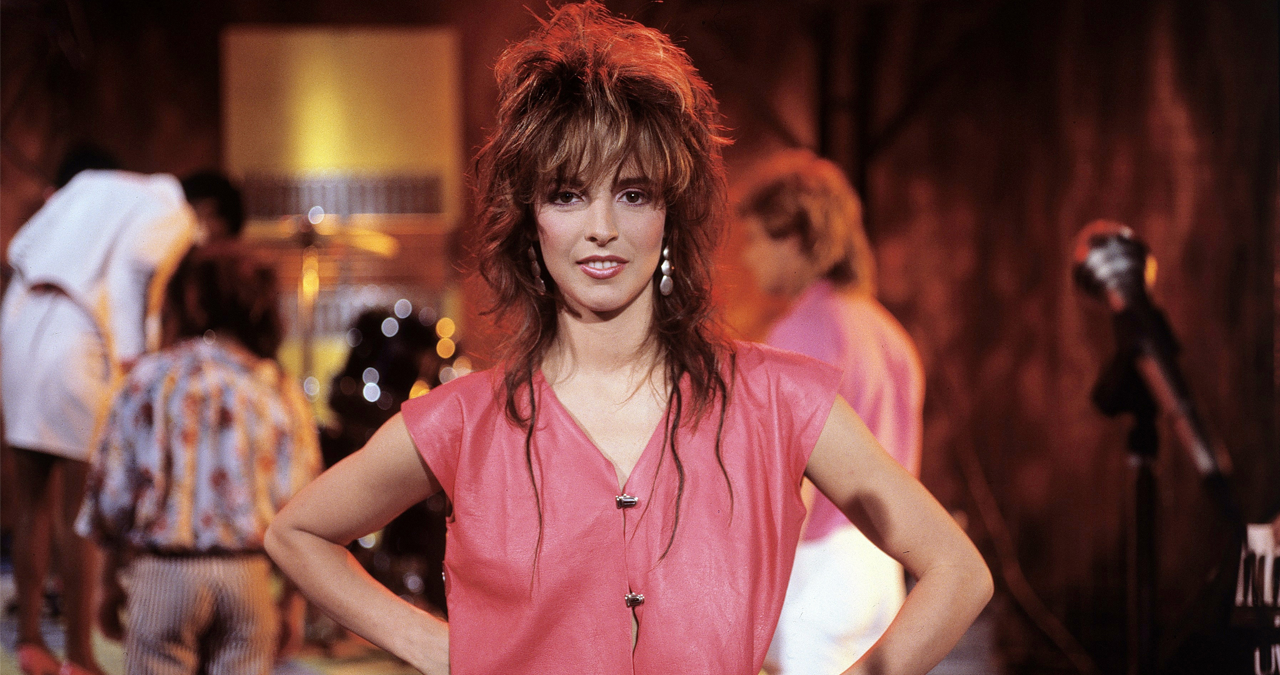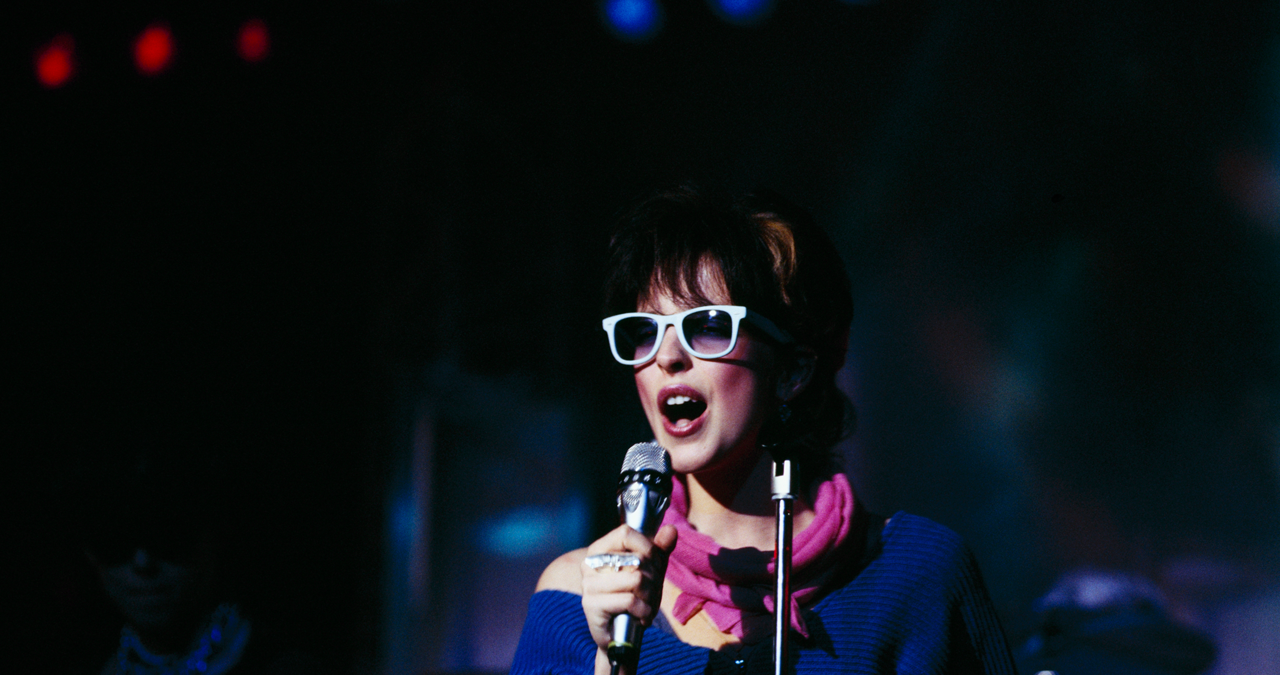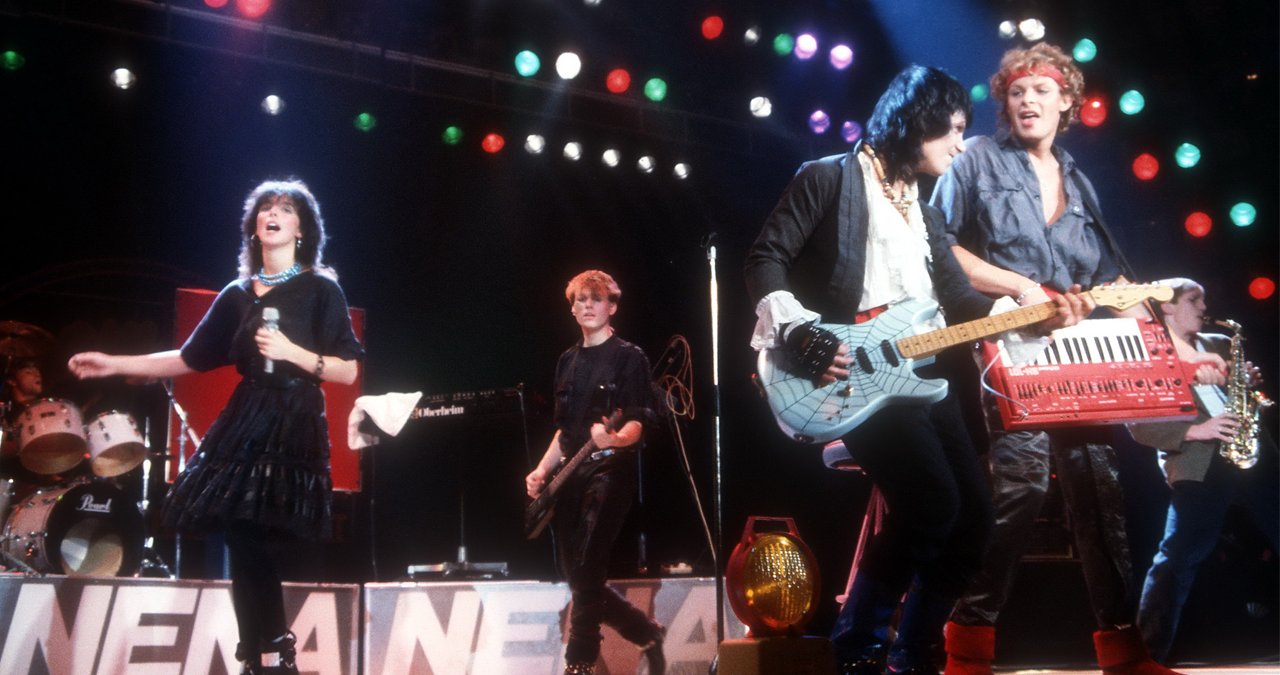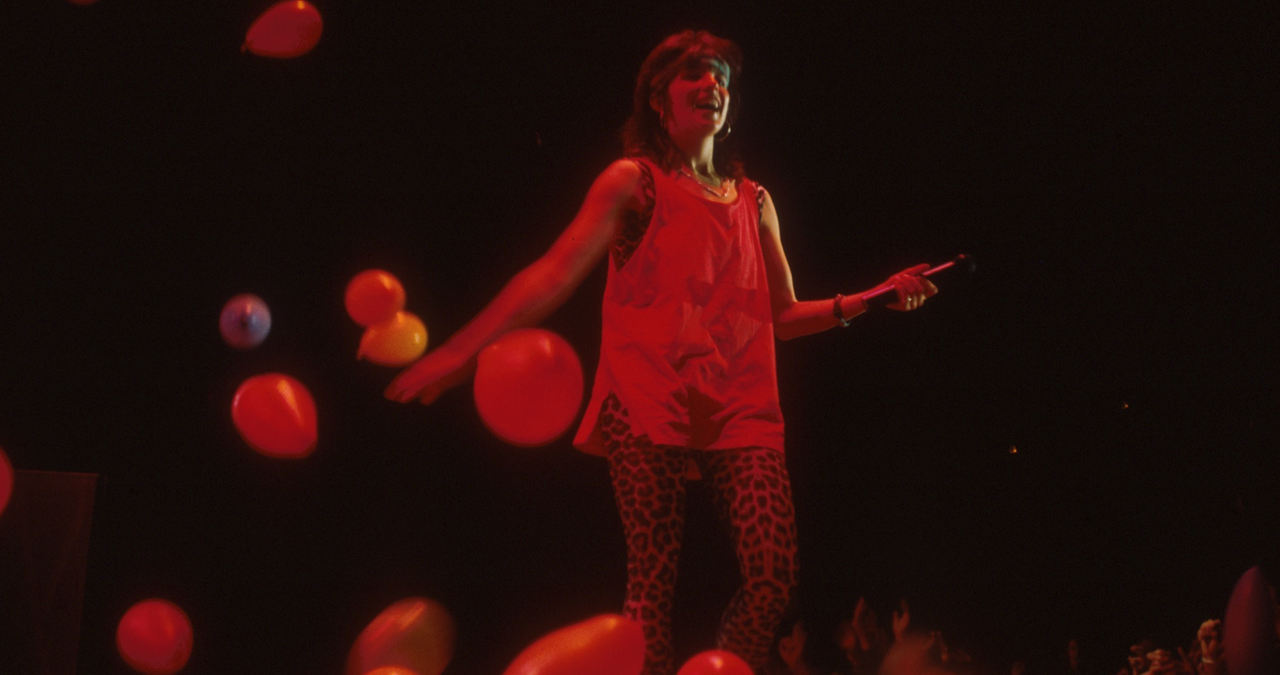The band didn't like the English lyrics, the record company didn't want to release it as a single, and the song had no chorus. The story of the 'foreign language song' that became an international hit
UFOs, Mick Jagger, and cold war paranoia: Nena on the bizarre origins of 99 Luftballons (aka 99 Red Balloons)

West Berlin, June 1982, and Mick Jagger looked out at the crowd assembled at the city’s Olympiapark Waldbühne amphitheatre. Playing here, in the still-divided Berlin, meant more than a usual show. And as he pouted and strutted for the last time that evening, clusters of helium balloons rose up from the stage and high into the night sky, where they would undoubtedly be seen on (if not float over to) the other side of the Wall.
To a young man in the audience, Carlo Karges, the balloons looked like a fleet of otherworldly spacecraft – and that thought started to worry him: "If they look like UFOs to me," he thought, "then maybe someone on the East side is thinking the same…"
He had visions of phone-calls to the Kremlin, frantic missile launches, bitter accusations and, ultimately, nuclear armageddon. He snapped out of it and went home, but this terrifying thought continued to haunt him. Perhaps, he thought, there was a song in it…

Carlo’s vision would lead to the incredible 99 Luftballons (99 Red Balloons for English-speaking readers), a song that would go on to become an international chart hit.
It rocketed to the top spot of a huge number of national music charts – most notably getting to the number 2 spot on the US Billboard Chart. No mean feat for the second single of a previously under-the-radar new wave Berlin-based outfit.
Sung by the characterfully-voiced Nena and her titular band - of which Carlo was primary guitarist and a principal songwriter, 99 Luftballons became inescapable in the early 1980s.
So how did one man’s ghastly premonition become a universally loved chart topper?
“The lyrics came first,” says Nena, currently in the middle of a solo European tour. She was with Carlo at the Stones concert in 1982. "That same night," she says. "he wrote the lyrics by hand and gave me the sheet the next day at rehearsal, grinning as he said, ‘Read this.’
“I read aloud: “Hast du etwas Zeit für mich, dann singe ich ein Lied für dich, von 99 Luftballons auf ihrem Weg zum Horizont.” I was instantly moved - and at that moment, I somehow knew this was going to be something big. We both did.”
Want all the hottest music and gear news, reviews, deals, features and more, direct to your inbox? Sign up here.
In English, the lyric read:
Do you have some time for me, then I'll sing a song for you
About 99 balloons on their way to the horizon
Nena (the band that is) was first formed in 1981 when the singer (real name Gabriele Kerner) came to live in West Berlin with her drummer boyfriend Rolf Brendel.
Enraptured by the new wave, DIY spirit of its music scene, Gabriele and Rolf assembled the other band members (the aforementioned Carlo on guitar, Uwe Fahrenkrog-Petersen on synths and keys and Jürgen Dehmel on bass) from the nightclubs and venues of the city.
The band took their name from Gabriele’s (Spanish) childhood nickname, which translated to ‘little girl’. It made her the de facto ‘star’ of the band.

Initially popular within the Berlin pop-punk scene, a record deal with CBS came swiftly. Carlo's ’99 balloons’ idea was just one of the 12 that were on the list to be tracked for the band’s eponymous debut album, set to be recorded at Spliff Studio in West Berlin. The record was to be produced by Reinhold Heil and Manfred Praeker.
“That song wanted to be written!" says Nena. "You don’t plan something like that. You experience something that deeply inspires you. It’s like a vision or an inner calling. You sit down, and words simply flow through you, and within minutes, a fully formed text appears on the page. That doesn’t happen every day, it’s a truly special moment. Carlo completely surrendered to that inspiration and created the perfect words.”
Carlo’s lyric recounted his continually escalating vision. Within it, the released balloons are detected on radar. They are then intercepted by (unspecified) military aircraft. These jets assault the balloons with heavy ordinance, and the resulting dazzling explosions cause a panic on the streets below. Other neighbouring nations take note of this hostile action. It causes a flashpoint – a reason to break the tension of the stalemate rendered by mutually assured destruction.
Eventually, war breaks out and, naturally – being set at the height of the Cold War’s nuclear panic – total annihilation results.
It’s a song that stresses the banality of war, and the devastating, long-lasting consequences of entrusting the world’s safety to irrational military leaders, each seeing themselves as the hero of their own narrative.
The English language version of the song’s third verse spells out this demented psychology, directly referencing Star Trek’s fictional heroic pioneer, Captain Kirk.
Ninety-nine knights of the air
Ride super high-tech jet fighters
Everyone's a superhero
Everyone's a Captain Kirk
With orders to identify
To clarify and classify
Its final verse (translated here from the original German, as the UK English re-record significantly changed many of the lyrics’ meaning) depicts the empty, silent wasteland left at the conclusion of the tale
99 years of war left no room for victors.
There are no more war ministers nor any jet fighters.
Today I'm making my rounds, see the world lying in ruins.
I found a balloon, think of you and let it fly (away).
The song reflected the unbearable mindscape of the Cold War, the fear that one tiny, completely harmless, action could lead to global pandemonium.
“I had my own band and was successful and started producing other artists at that time,” the song’s producer Reinhold Heil told LAist. “One of them was Nena, and [99 Luftballons] wasn't a throwaway. The strength of the song is that it addresses this really dark subject matter in some sort of an innocent way, which was fitting her as a personality and an artist and her age group.
"At the same time it evokes the quite real threat of thermonuclear destruction. That's what happens, basically at the end of the song, that one balloon flies away and the world is in ashes.”

The song was also the strongest thing the band had from a musical point of view.
Shaped largely by Uwe Fahrenkrog-Petersen, the song’s structure was built around a rising and falling, nursery rhyme-evoking melody. It was an arrangement that was an exercise in dynamics, peppered with vibrant, synth-powered colours – but fuelled by a punkish spirit.
Starting with an ethereal, reverb-soaked version of the central verse hook, Nena spelt out the melodic structure of the song – and introduced the lyric. This was housed within a cinematic-sounding synth pad generated by Uwe Fahrenkrog-Petersen’s Oberheim OB-X. This ambidextrous synth was relied on for the majority of the song’s electronic textures.
As the song shifted gear and began its next section, the OB-X suddenly switched roles, becoming an imposing synth bass, affixed to Brendel’s swaggering beat. This riff vamped and cavorted with some live slap bass punctuation. Before, without warning, it began its urgent jog through its first verse, and its delirious cautionary tale.
It’s here that Nena developed Carlo’s narrative. Further dynamic shifts followed before the song concluded its arc back in the floaty domain of that synth-pad-backed intro, for its final verse.
It was undoubtedly a fantastic, attention-grabbing song that kept listeners engaged, while still sledgehammering that central melody (and message) into their heads. Interestingly, the song didn’t have a conventional chorus. But it hardly mattered.
The song wasn’t chosen to be the debut’s lead single. That honour instead went to the brisk Nur geträumt. Released ahead of the album by eight months in May 1982, Nur geträumt initially sold fairly poorly, but an appearance by the band on German TV staple Musikladen later that summer exposed Nena’s sound to a wider German audience.
Penned by Nena and Rolf, Nur geträumt’s shimmering synth, bubby arps, stabby guitar and Nena’s absorbing vocal seized Germany’s attention. The single hit number 2 in the national charts in August of that year, where it remained for seven weeks.
“The day after Musikladen we sold 40,000 singles,” says Nena. “From there, everything just kept moving."
In January 1983, the self-titled first album was released, hitting the top of the album charts in Germany, Austria and the Netherlands. Two months after the album’s release, the band geared up for their second single release. Oddly enough, the band had earmarked 99 Luftballons as the third single originally, but a little record company interference changed all that…
“Why a song becomes a global hit - no one can really explain that... least of all me!” says Nena. “But afterwards, everyone always claims they saw it coming.
“For us as a band, 99 Luftballons was clearly meant to be our third single. However, our record label panicked when we made that decision. They tried everything to talk us out of it. Their main argument was that the song didn’t have a chorus and therefore wasn’t commercial enough!”
Motivated to prove the label wrong, the band brought forward 99 Luftballons' release to capitalise on the success of Nur geträumt.
“To this day, I still laugh out loud when I tell that story. Thank God we stuck to our decision. The label couldn’t stop us. Shortly after, 99 Luftballons earned gold records all over the world, and even now, wherever I perform, people sing every word of it – even though, as you know, it has no chorus!”

That original German-language release of the song became a towering international hit. Even (surprisingly for a German-language song) in America and Australia.
Over the course of the year since its initial release as a single, dogged radioplay propelled it up the US single charts. American listeners too embraced the spirit of the song, and its yearning for global security and an end to the lunacy of the Cold War.
“When the call came from New York – an excited voice from the record company telling us that 99 Luftballons was playing on heavy rotation on American radio and climbing the charts – we all happened to be sitting together,” says Nena.“So many unexpected, wonderful things were happening, you couldn’t keep up. We simply lived that time to the fullest and enjoyed every moment intensely.”
But for the more guarded UK market, a request for an English-language version of the song to be tracked for single release was met with some skepticism from the band. Eventually agreeing to the request, lyricist Kevin McAlea was enlisted to pen an English re-interpretation of the song's lead vocal.
Many of the original lyrics when directly translated to English made little sense, so Kevin re-framed the same overall narrative in a slightly different way for Nena to re-record. It was at this moment that the Luftballon (which translates as ‘air balloon’) became a ‘red’ balloon. The colour is actually unspecified in the original version.
It has been said that Nena and her band disliked this re-working of the lyric. However, it seemed that this time, the record company did in fact know best.
The English language version also proved a major success and landed the band a UK number 1 hit.
“The English lyrics are fine, but they never came from the heart,” Nena tells us. “They tell our story in a completely different way. I never felt connected to that version. Thanks to Rodney Bingenheimer (KROQ-FM), our German version was played constantly on US radio, and things took off very quickly.
"Still, the record label wanted an English version - it was purely a money-driven decision, I think. Maybe they also believed that a German song wouldn’t have long-term success, internationally. They hoped an English version would reach more people – but all over the world, it was always our original German version that listeners wanted to hear. Even in Japan.”

Sadly, the band’s creative adventures came to a close after their fourth studio album Eisbrecher in 1987. Sad too, was the death of that original envisioner of those UFO-like balloons, Carlo Karges, who passed away in 2002.
Nena is now a successful solo artist (her last record being 2020’s Licht) and still ends shows on her current tour with a song that, for many, seems to define the contradictions, camp and chaos of that penultimate decade of the 20th century like no other – but still seems relevant in today's divided world.
“I sing my songs with the same joy as I did back then – otherwise, I’d be doing something else by now,” says Nena. “And yes, we still live in a divided world, but I believe that this intense process we’re all going through will lead us into a new world, one of peace and togetherness among people. Everyone can contribute to that. Through my music and the connection I have with my audiences, I try to play my part.”

Still a professional creative, Nena is aiming to release a new record - and continue her tour into 2026. “Right now, I’m touring across Europe, playing in countries where I’ve never performed live before – it’s exciting, and everywhere we go, we meet wonderful, kind people. Next year, the tour continues: 30 concerts are already booked, with more to come.
"I’m also working on a new album. The songs I’m writing for it all follow one mantra: Alles wird gut – Everything will be fine.”
And is she happy that it’s still this song that most people respond to - or has 99 Luftballons become a bit of an albatross?
“That’s easy to answer,” she says. “I love this song - and as long as I’m on stage, there will never be a Nena concert without 99 Luftballons.”

I'm Andy, the Music-Making Ed here at MusicRadar. My work explores both the inner-workings of how music is made, and frequently digs into the history and development of popular music.
Previously the editor of Computer Music, my career has included editing MusicTech magazine and website and writing about music-making and listening for titles such as NME, Classic Pop, Audio Media International, Guitar.com and Uncut.
When I'm not writing about music, I'm making it. I release tracks under the name ALP.
You must confirm your public display name before commenting
Please logout and then login again, you will then be prompted to enter your display name.
![NENA | 99 Red Balloons [1984] (Official HD Music Video) - YouTube](https://img.youtube.com/vi/hiwgOWo7mDc/maxresdefault.jpg)
